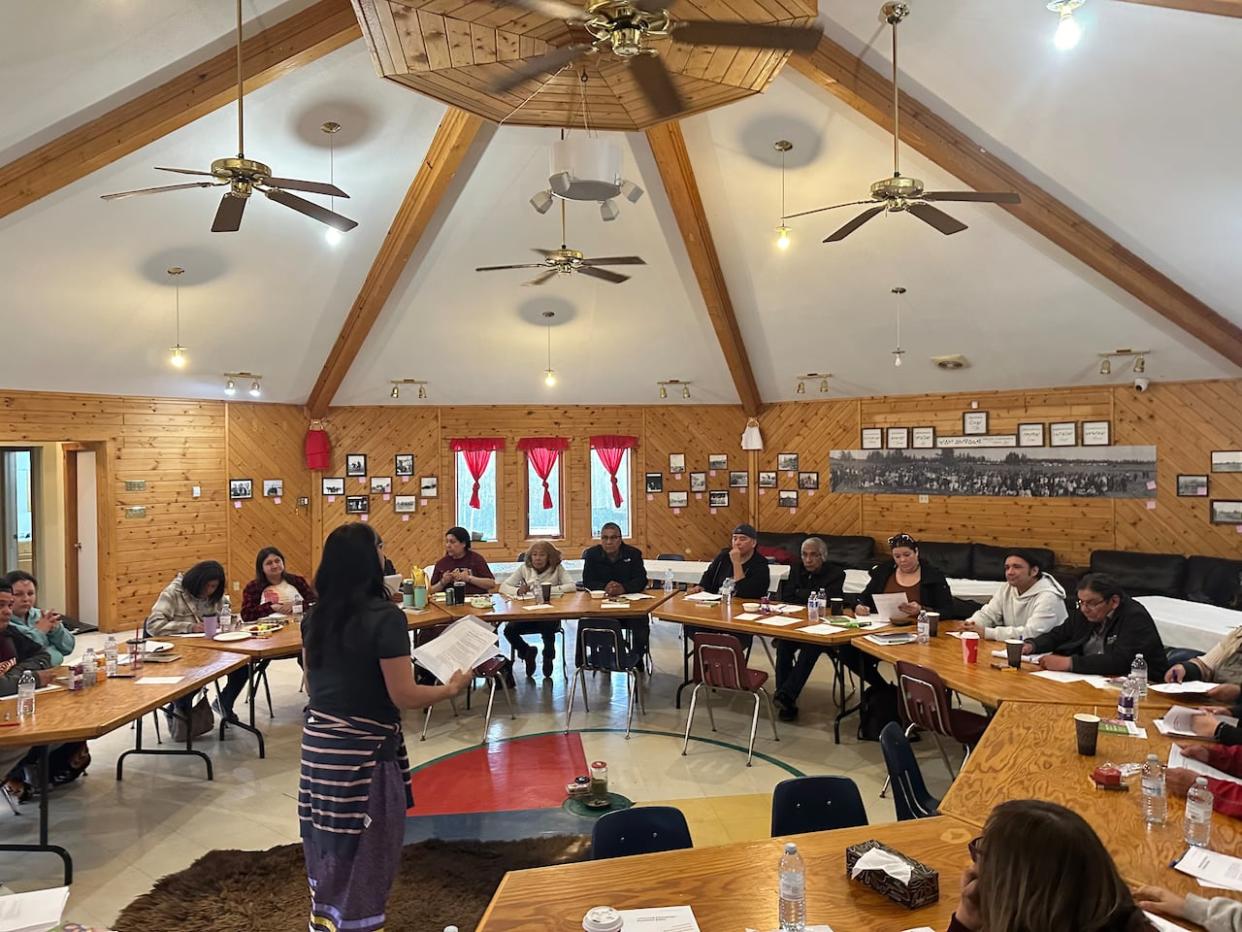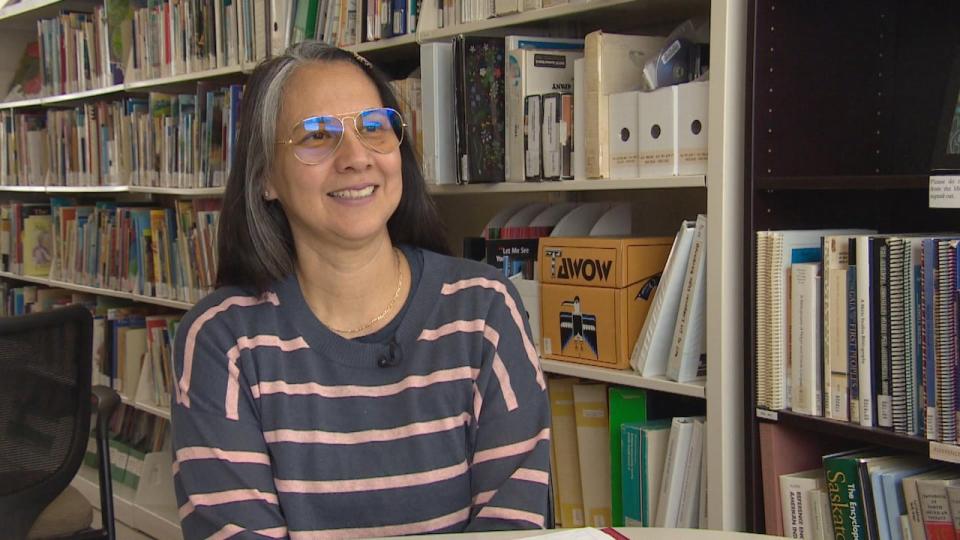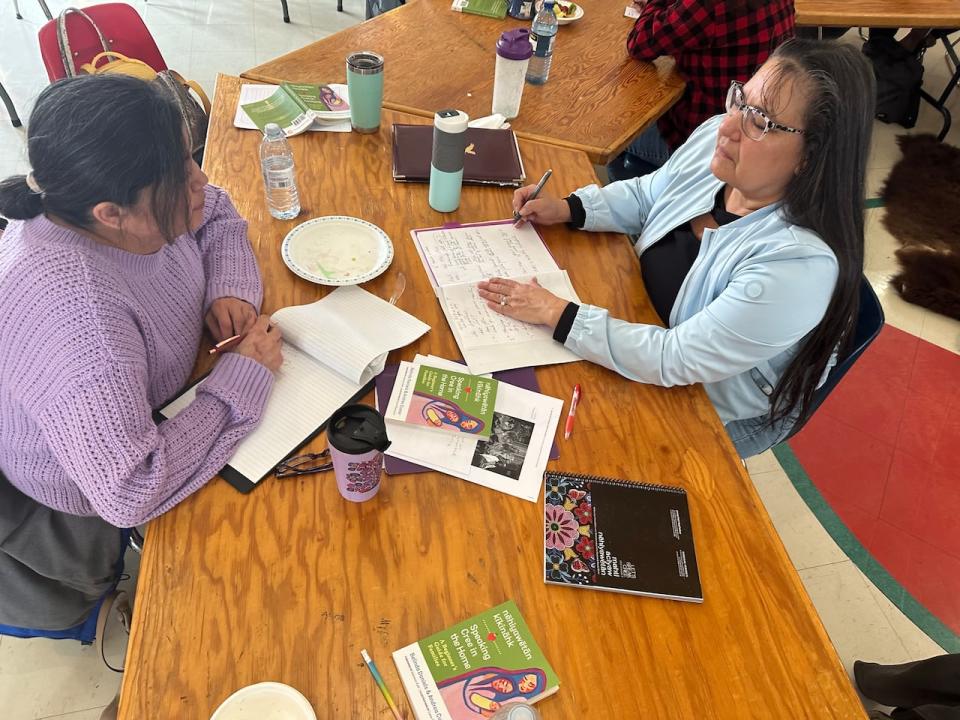Federal funding for Indigenous culture, language programs must be sustainable, say advocates

Belinda kakiyosēw Daniels says it's good to be home.
The University of Victoria Indigenous education professor was back on Treaty 6 territory in Saskatchewan this week. Daniels and others launched a mentorship program in her home community, Sturgeon Lake First Nation, located approximately 150 kilometres north of Saskatoon.
Speakers of the Cree language, or nēhiyawewin, were paired with other adults in the community who want to reclaim the culture of their ancestors.
It's one of many cultural revival programs underway at Sturgeon Lake.

University of Victoria professor Belinda kakiyosēw Daniels was back in her home community of Sturgeon Lake First Nation this week to help launch a cultural mentorship program. (Submitted by Belinda kakiyosēw Daniels)
Daniels said that things are slowly changing for the better.
"I feel elevated. I feel inspired," she said. "All the language work that's happening right across the country."
The Sturgeon Lake projects are funded in part through a $500,000 federal government grant.
This week's federal budget included more than $290 million for Indigenous language and cultural preservation. The government says it will go to programs that are led by First Nations, Métis and Inuit communities.
Daniels said funding is one way to honour the treaty promises made more than a century ago, but that commitment needs to be sustained over time, not just for one year.
"Of course, money does help so I'm grateful about that. However, I just think that with the Indigenous Languages Act the federal government promised sustainable funding. So my question is, why is the number always changing? Why is it always moving?"

Participants in a Cree language, or nēhiyawewin, mentoring program at Sturgeon Lake First Nation working together this week. (Submitted by Belinda kakiyosēw Daniels)
Saskatoon Tribal Council Chief Mark Arcand agreed.
"This is a good news story and I think we've got to be happy for it. But again, we're always in need of more, just like everyone else is. So it's a good starting point," Arcand said.
"Is this a one-off? If it's a one-off, it's going to fail. It's got to be continuous funding that's enhanced with the number of people taking these programs, getting their language and their culture back."
The budget also included money for Indigenous businesses to secure loans, for residential school survivors and their families, and for on-reserve housing.

